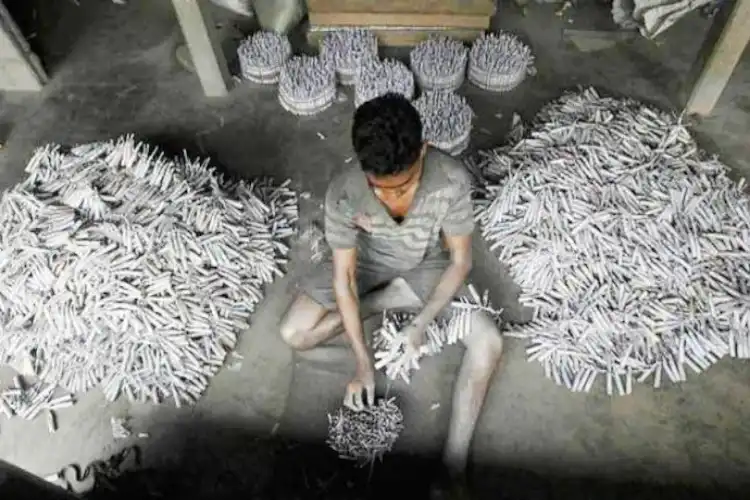
 Saquib Salim
Saquib Salim
We all have enjoyed lighting firecrackers, and seen beautiful displays of them at weddings and festivals, but have we ever enquired who makes them? Making firecrackers, like many other occupations in India, has largely been carried out by a caste group that has also acquired knowledge and skill through generations from medieval times. The census reports since the 19th century have classified atishbaz or barutsaz as a caste. The caste refers to a "person who makes gunpowder and fireworks”. Interestingly, almost all of them were Muslims.
In medieval times, these people used to manufacture gunpowder and accessory items. Since the 16th-century gunpowder was an important element of war as it played a decisive role in winning battles. These were important people who commanded respect and earned well. The display of fireworks was a prestige issue for Nawabs, Rajas and Kings and they would shell out huge amounts for having a better display of firecrackers than their rivals.
N. Kumar, in the District Gazetteer of Patna, noted, “it was not uncommon for Nawabs and Zamindars to sell some of their landed property and utilise the proceeds towards fireworks. Thus a large number of persons called atishbaz came to be engaged in the manufacture of fireworks of beautiful effect on being fired.”
In the 18th century, when the English were in their initial phase of empire building in India, atishbaz were important people in society and lives in towns and cities. It must be noted that Mir Taqi Mir, one of the most influential early Urdu poets of the 18th century, mentioned very few occupational categories in his poetry. Apart from Brahmin (priest), Afsanakhwan (writer), Attar (fragrance maker), one occupational group mentioned by Mir was Atishbaz. In at least two couplets he mentions them,
kyaa us aatish-baaz ke lau.nDe kaa itnaa shauq miir
bah chalii hai dekh kar us ko tumhaarii raal kuchh
(Why is this fondness for the young atishbaz boy
You are salivating while looking at him)
gayaa nazar se jo vo garm tifl-e-aatish-baaz
ham apne chehre pe u.Dtii havaa.iyaa.n dekhii.
(When I saw that young atishbaz boy
The emotions were written on my face)
Similarly, Mirza Ghalib and Sheikh Ibrahim Zauq have also mentioned this occupational group. Both of them were writing before 1857 when the English captured Delhi.
After the complete control of the British over India, Indian firearms makers were rendered jobless. Arms and ammunition became a monopoly for English manufacturers. Through different laws, the art of atishbazs to manufacture arms was prohibited. The displays of firecrackers also gradually went down as very few royal states had enough money to support those shows. Once prosperous, Atishbazs were now economically and socially backward. Now, their occupation was largely illegal.
It was not in the interest of the British that an indigenous gunpowder industry was allowed to thrive. After 1906, when revolutionaries started bombing the British infrastructures the policy to contain this art became even more important.
Nita Kumar in her work, The artisans of Banaras : popular culture and identity, 1880-1986, noted that in Varanasi to make ends meet atishbazs who make firecrackers otherwise also do other works like making taziya for Muharram processions. N. Kumar pointed out, “with the thinning of the purses of Nawabs and Zamindars displays of fireworks are getting simpler every day. The atishbaz community is now mostly engaged in manufacturing small items for Diwali and Shab-e-Barat and to a very small extent for marriage occasions.”
ALSO READ: All India Muslim Majlis was floated to counter Muslim League
At present, atishbaz, can be found in most of the urban Muslim localities fighting against the time. They paid for their profession at the hands of the British and were turned into a backward (pasmanda) caste group from earlier prosperity.
Saquib Salim in a historian
